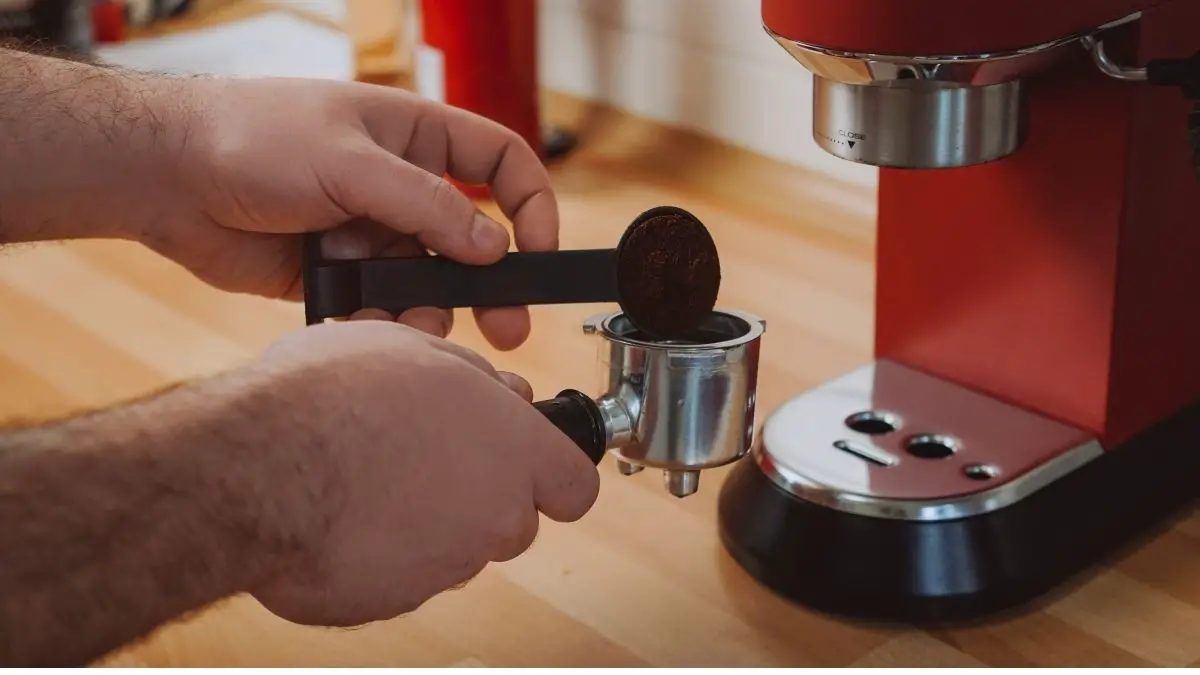Most of us may be wondering if our trusted espresso machine can make a standard cup of coffee. After all, if you’re not a coffee enthusiast, you’ll want to mix up your morning pick-me-ups every now and again. So, how about a sip of ground coffee on days when things aren’t so difficult?
Today, we will explain whether or not you should do it, if yes, how to do it, and provide you with more coffee tips to consider when making your espresso.
So, can you use ground coffee in your espresso machine? The quick answer is, sure, you can. But will the result be the same as if you used small-powdered-size espresso beans? That’s a different story.
Is Special Coffee Required For An Espresso Machine?
This is another frequently asked question among new espresso machine users. Is special coffee required for an espresso machine? The most essential thing to know about espresso is that it is neither a type of coffee bean nor a coffee. It’s also not a roast. Espresso is the method of making quite fine ground coffee with hot forced water under high pressure.
You don’t need something specific to use an espresso machine, and you may use any type of beans. Whatever roast blend you select for your espresso machine is a matter of personal choice and what flavor or mix you are aiming for. Of course, if you’re going to use normal coffee, it’s always best to use fine grinds.
Using Ground Coffee In An Espresso Machine – What Will Happen?
Espresso is produced by pushing hot, pressured water over finely ground coffee. Because the hot water only comes into contact with ground coffee for such a brief amount of time, the coffee must have an extremely fine grind size.
This is because a finer ground coffee size indicates that the water will blend more in the coffee owing to a larger ground area, and there will be fewer gaps between coffee, causing the water to take longer to reach through it.
Pre-ground coffee is often coarse rather than fine in grind size. This is because ground coffee is intended to be used to create coffee, and tastes better when brewed with coarser coffee.
When you use ground coffee to prepare espresso, the water passes through it rapidly and comes into touch without much of the coffee. As a result, the espresso will most likely taste weak and sour.
But if you have a grinder, you could simply grind your ground coffee extra finely.
How To Reduce The Sourness In Espresso
Luckily, there are several things you can do to lessen the sourness of the espresso if you are using pre-ground coffee to prepare it.
Tamp Down The Grind More Firmly
Tamping is the process of applying pressure on the coffee ground in the portafilter to make it flat and compact. Normally, you wouldn’t like to tamp really hard because it might result in harsh espresso.
But, if you use coarse ground coffee, tamping more aggressively will assist to make it much harder for the water to get through. This would also result in more coffee oil mixing with the water, making it a less sour espresso.
Use Hotter Water Than Usual
Adding hotter water than usual will result in more coffee blending with the water, making it less sour. However, don’t make the water too hot or the espresso will taste burned. It is generally advised that you keep the water temperature between 195 to 205 degrees Fahrenheit.
Make Ristretto Instead of Espresso
A ristretto espresso is one that has been brewed with much less water compared to usual. This produces a stronger-tasting espresso that might occasionally be harsh. If you are using ground coffee to prepare it, it will most likely taste more like a conventional espresso with a lesser volume.
But Keep In Mind…
Playing with different coffee varieties with espresso machines also entails reducing your expectations for the end result. And besides, these machines are created specifically to grind finely ground espresso beans.
The Finer The Grind, The Better
To make the perfect espresso shot, espresso machines pump pressure hot water over fine ground coffee beans. As a result, when using the grinder with anything except espresso beans, getting finer with grind size would always come to better results.
This is due to the fact that the finer the grind size, the more coffee comes into touch with water, leading to a more effective infusion process. Smaller spaces between the coffee beans also have a role because they let water move through to the spaces more gradually and thoroughly, soaking as much flavor as possible.
Avoid Using Commercial Ground Coffee
Commercial ground coffee is much more likely to be coarser than fine, which will not work well with an espresso machine’s brewing procedure. This is due to the fact that they are typically intended in brewing filtered coffee, a technique of preparation that is ideal for larger size coffee beans.
When coarse grinds are used in an espresso machine, the water flows fast through them, messing with the infusion process. The water thus struggles to capture the richness and taste we desire in our typical cup of coffee.
Solutions For Commercial Coffee Beans
What will you do with commercial coffee beans, which are generally of the coarse variety so that you can use them in your espresso machine? Read on to find out the answers.
Grinding
Of course, having just coarse grinds at your disposal isn’t the end of the journey for your experiments. A few grinders can easily finely grind commercial coarse grinds.
However, keep in mind that possessing a grinder isn’t the only thing that counts; how you use the equipment also has an influence on the output. To lower the sourness and acidity of the final brew, grind more firmly.
Tamping
Reduce the tamping component of grinding as well. This is the process of applying pressure on the grinds in a portafilter to flatten and compact them. When brewing ordinary coffee, you would generally tamp the beans excessively firmly, but doing it on an espresso machine may result in too bitter coffee.
However, tamping with force on coarse grinds might make it harder for water to flow through to the coffee, leading to a somewhat more flavored product.
Espresso-Specific Beans
Instead of putting coarse ground coffee through the espresso machine, use espresso-machine-specific beans. This way, you may ground the beans by yourself for the best espresso. This allows you to get more control over the size of the grind, which is the most critical component in espresso brewing.
What To Keep In Mind When Choosing Coffee Beans For An Espresso
In choosing pre-ground coffee or coffee beans in making your espresso, there are a few factors to keep in mind that will affect the flavor of the espresso.
Type Of Coffee Beans
The kind of coffee beans used will influence the flavor of the espresso. Robusta and Arabica coffee beans are the two most common varieties of coffee beans available.
Robusta coffee beans are more affordable than Arabica beans because they are easier to grow. Robusta beans have a robust, nutty, and bitter flavor that some people find too intense.
Arabica coffee beans are more expensive because they must be produced at a higher altitude and the trees on which they grow are more susceptible to illness. They are, nonetheless, highly popular since they have a smoother taste.
Because espresso is intended to have a little bitter flavor, a combination of the two with a preference for Robusta beans is preferred.
Type Of Roast
The roasting of the beans will also have an effect on how the espresso tastes. If the beans are roasted lightly, the espresso will often have a milder flavor. However, they frequently cause the espresso to taste somewhat sour. Dark roasted beans will usually give an espresso a richer flavor, although they can be harsh or even burned-tasting.
When creating espresso, dark roast beans are the most preferred choice.
Origin Of The Beans
The origin of the coffee beans can also have an effect on the flavor. If the coffee beans are from the same single-origin, the espresso will usually have a stronger taste, but it could also lead it to be sour. Beans from diverse sources, on the other hand, usually get a more balanced flavor.
Of course, tastes vary, so you should experiment with several varieties of beans to find which ones you prefer. But if you’re uncertain, the most frequent mixture is a blend of coffee beans from various origins which are a mix of Arabic and Robusta and have a dark roast.
End Note – Experiment With Your Coffee
Coffee enthusiasts are constantly on the hunt for another best idea. Sometimes certain things will come to them, and other times they have to keep coming up with all these unique inventions.
Using normal ground coffee beans in your espresso machine might be your opportunity to explore the finest coffee for yourself. Just remember to keep the above ideas and tips in mind if you want to make a good and decent brew.

